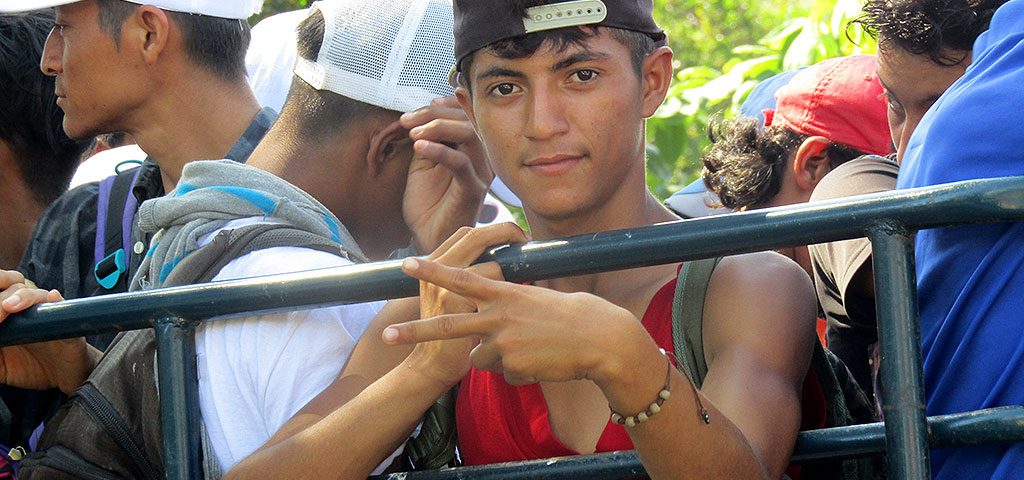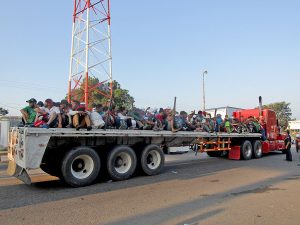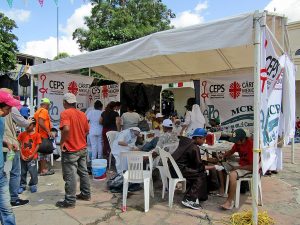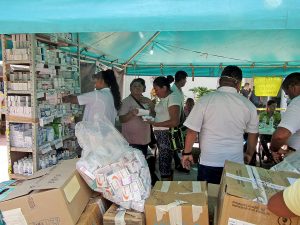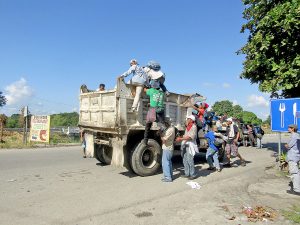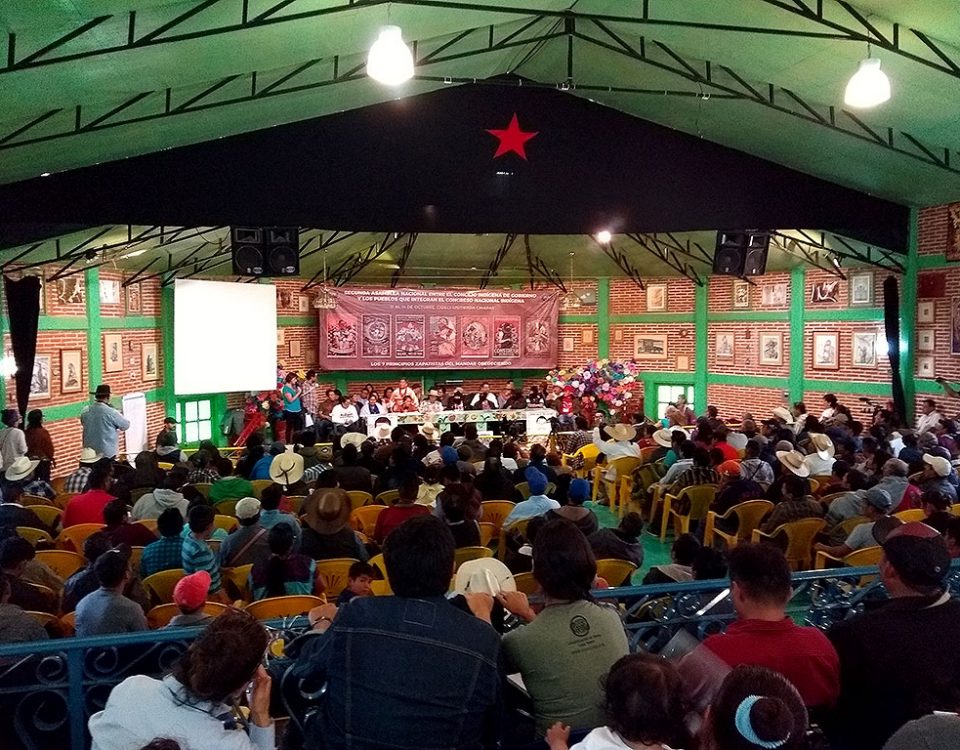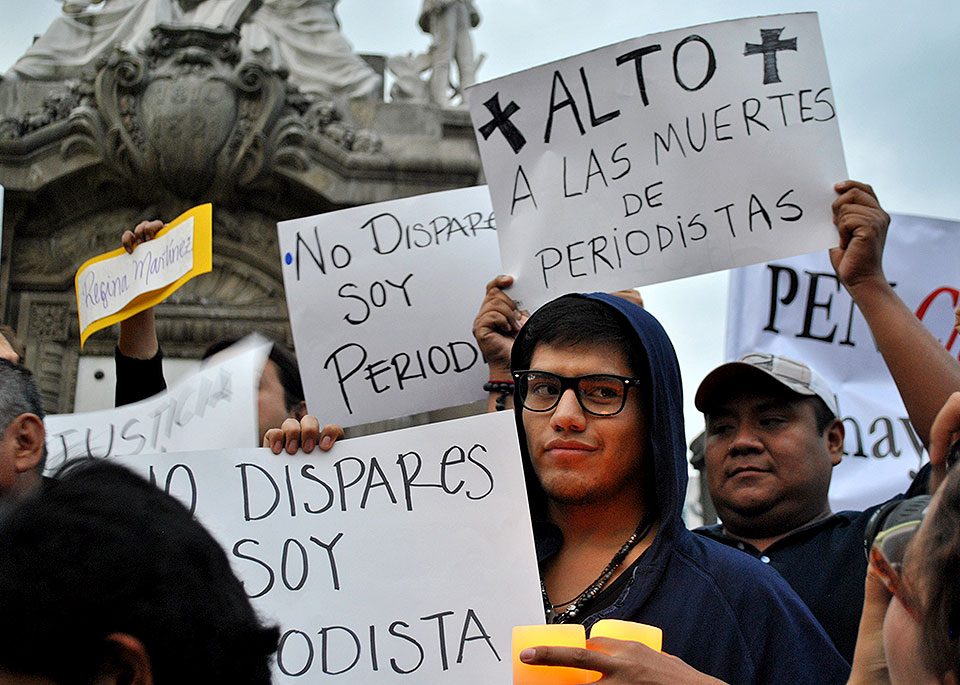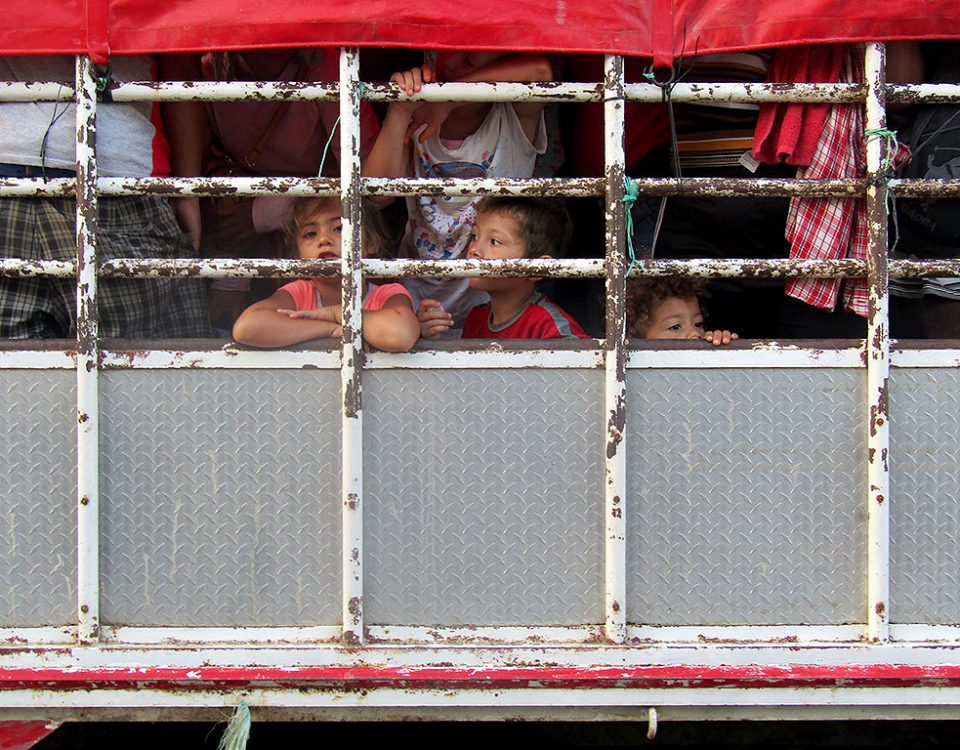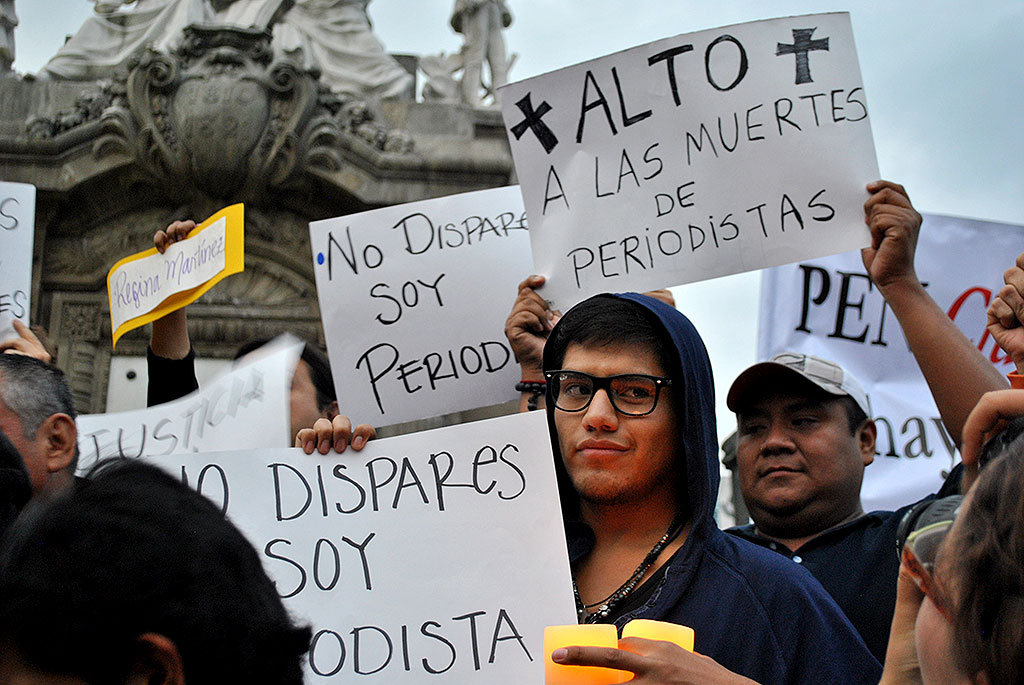
FOCUS: MEXICO – Freedom of expression under attack
11/12/2018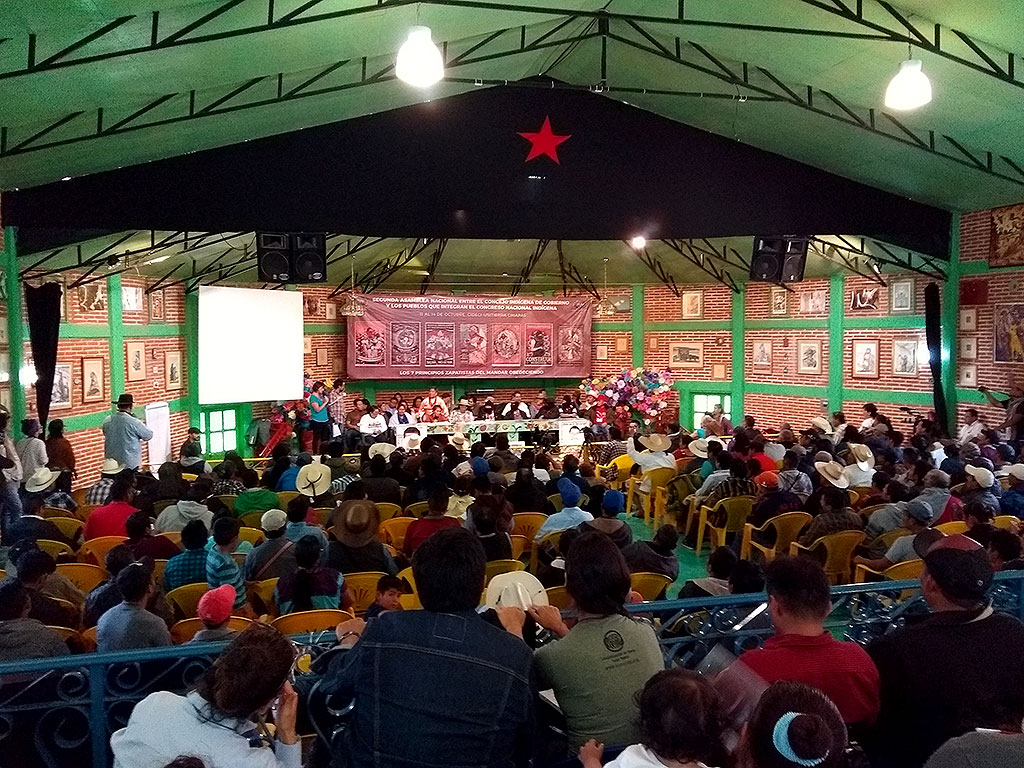
SIPAZ Activities (mid-August to November, 2018)
11/12/2018October 19, 2018 marked the day in which the migrant exodus, popularly known as the migrant caravan, made the migration phenomenon of Central America visible in an unexpected way.
The emblematic images of several thousand men, women, boys, and girls at the gates of the southern border of the Mexican Republic spread around the globe and quickly became world news.
The events of that day, in which the Suchiate River Bridge became a scene of despair, fear, and exhaustion, occurred after federal police forces obstructed the massive mobilization at the Mexican fence on the border between Tecun Uman, Guatemala, and Ciudad Hidalgo, Mexico. When a confrontation began, “anti-riot police fired tear gas at people, mainly women, girls, and boys, a disproportionate reaction which forced migrants to retreat until they were behind the containment fence on the bridge to prevent their passage,” according to the documentation of Voces Mesoamericanas. Finding themselves trapped on the bridge for hours without humanitarian aid, some decided to throw themselves into the river to continue their difficult and dangerous path to the US. The journey took them to travel approximately four thousand kilometers through Mexican territory, until the first group of around 5,000 migrants reached the border city of Tijuana, Baja California, at the end of November.
The desperation and anguish among migrants in the northern shelters increases by the day: the delay in processing the thousands of asylum applications and Trump’s hard line that dictates that applicants must wait in Mexican territory until the immigration courts rule on their cases, could prolong their state of uncertainty for months. Tensions boiled over on November 26, 2018, in a mobilization of around a thousand migrants who tried to forcibly cross the fence between the two countries, which caused a confrontation between US border patrol agents and migrants in which tear gas was used, a painful repetition of events on the southern border. With these dramatic developments, the question arose on what factors forced this growing and uncontrollable number of people to flee their lands.
Analyzing the starting point of the exodus, the city of San Pedro Sula in Honduras highlights the context of violence and poverty: according to the Honduran National Statistics Institute, 48% of the population lives in a situation of poverty. San Pedro Sula has also held its place for the past nine years in the ranking prepared by the organization Security, Justice, and Peace of the 50 most violent cities in the world, and in 2015, having occupied the sad position of first place for four consecutive years.
This context fits into a national scenario that the Honduran Jesuit priest and opposition leader in his country, Ismael Moreno Coto, describes as a “pressure cooker.” The Honduran people are confronted with a government that “abandoned public social policies and replaced them with social compensation programs, while consolidating the development model based on investment in the extractive industry and the privatization and concession of common goods and public services.” Tomas Hirsch, a Chilean politician and son of German migrants, highlighted these same drivers of migration: poverty and violence in the seventh World Social Forum of Migration 2016 in Sao Paolo, Brazil. He describes how “the thesis which argued that economic globalization, by simple action of the market would raise the standard of living of the poorest, failed.”
Hirsch elaborates that the incomparable accumulation and concentration of wealth and power that our economic system allows is responsible for the inequality, and thus, of the emerging violence in the countries of the South. For him, it is undeniable “that the countries of the so-called ‘free’ economy forged their wealth by promoting wars of expansion, colonizing and neo-colonizing, dividing nations and regions, earning money on the basis of discrimination and violence, and absorbing cheap labor at the cost of imposing unfavorable terms of trade for the weakest economies.”
In this context, we must mention the major role that the United States has played in massively intervening in politics, economy, and military decisions in Honduras “in conjunction with the interests of the political and economic oligarchies of that country”, as described by Carmen Fernandez Casanueva, Lindsey Carte, and Lourdes Rosas in an analysis for Animal Politico. They affirm that since the coup d’état in 2005, American influence has been strengthened to “favor their own interests and promote corruption and the power of drug trafficking in the country.”
Several testimonies of the migrants reflect the endemic violence in their countries of origin, in which juvenile delinquency, drug trafficking, extortion, and murder by organized gangs, “las maras“, is a reality that they face on a daily basis. Mario Castellanos, a twelve-year-old boy who decided to face the road alone, was interviewed by several media organizations during his journey and reported, how “in Honduras one suffers.” When asked about his motives to join the caravan, he said that “they wanted to put me in a gang “, but he did not want to get involved. The young 26-year-old Dayana Avila, who left her three-year-old son with her mother in Honduras, tells how she became pregnant when she was raped by “some gang members.” To prevent her reporting her assailants, she was the victim of constant death threats. “With the pain of a mother I had to leave,” as she seeks to earn money for an operation for her son who suffers from epilepsy.
This set of factors is the reason why for Moreno Coto, the Honduran population “has stopped trusting politicians, government, and high-level private enterprise. (…) They leave as an extreme expression of the decision of the population to take justice into its own hands.”
Thousands of people have embarked in the search of a better life. It is difficult to have exact numbers, as every day more people join the collective march to the north. At the end of October there were already several “caravans”, including around ten thousand people crossing Mexican territory, a movement that according to Moreno Coto “has overwhelmed churches, civil society sectors, NGOs, and governments”, but which “is responded to with simple gestures of solidarity, generosity, and spontaneity on the part of the people who see the migrants pass by.”
The migration exodus, composed mainly of Hondurans, but also Salvadorans, Guatemalans, and Nicaraguans, has exposed the “daily reality” that is migration. Moreno Coto estimates that the number of migrants who left in a single day would have arrived in less than a month. “It has been the silent, cautious, discreet, private, invisible and even shameful caravan that with this explosion has become a visible, public and even dignified caravan”, she summarizes.

